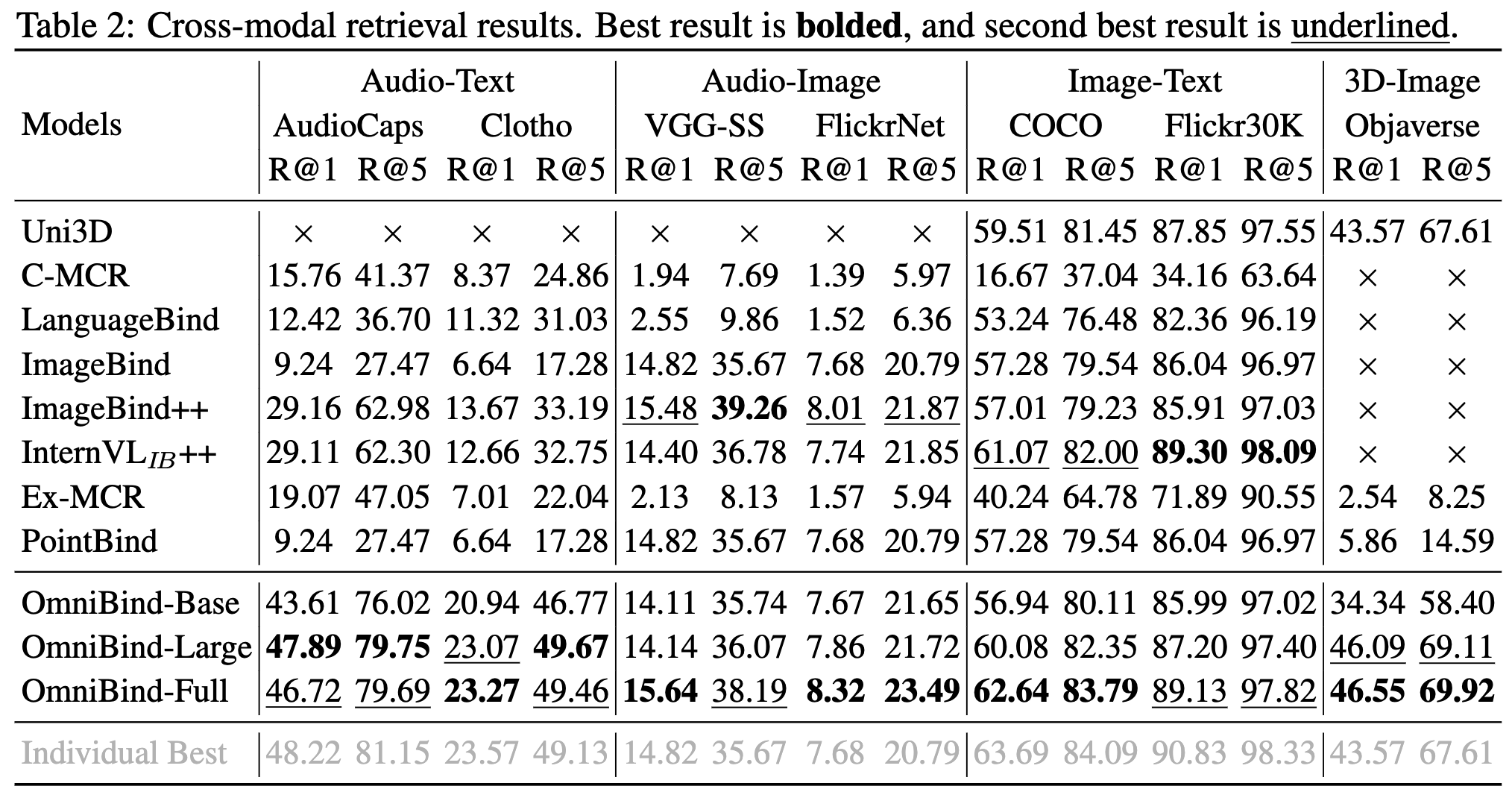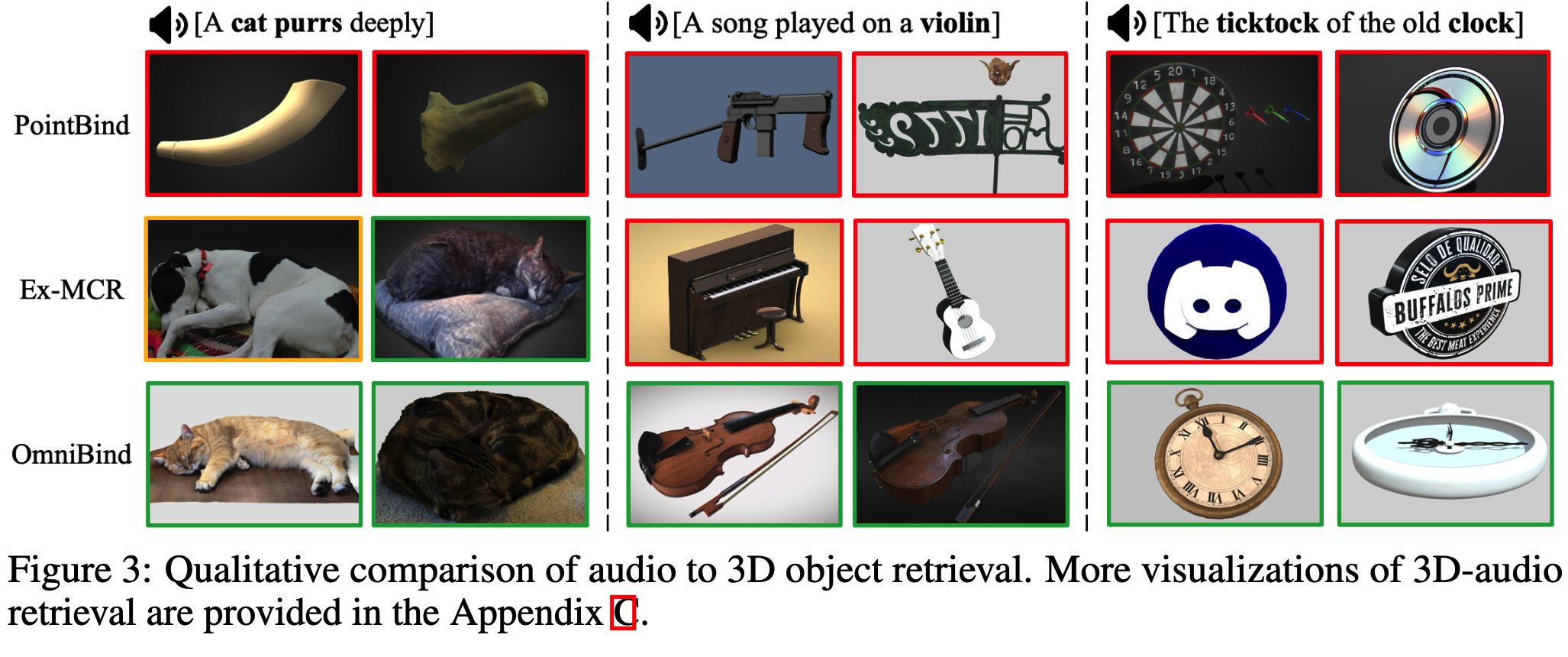
Updates: OmniBind provide large-scale 3D-audio-image-language omni representation models, ranging in scale from 7B to 30B parameters, achieve SoTA on 13 benchmarks.
Abstract
Recently, human-computer interaction with various modalities has shown promising applications, like GPT-4o and Gemini. Given the foundational role of multimodal joint representation in understanding and generation pipelines, high-quality omni joint representations would be a step toward co-processing more diverse multimodal information. In this work, we present OmniBind, large-scale multimodal joint representation models ranging in scale from 7 billion to 30 billion parameters, which support 3D, audio, image, and language inputs. Due to the scarcity of data pairs across all modalities, instead of training large models from scratch, we propose remapping and binding the spaces of various pre-trained specialist models together. This approach enables "scaling up" by indirectly increasing the model parameters and the amount of seen data. To effectively integrate various spaces, we dynamically assign weights to different spaces by learning routers with two objectives: cross-modal overall alignment and language representation decoupling. Notably, since binding and routing spaces both only require lightweight networks, OmniBind is extremely training-efficient. Learning the largest 30B model requires merely unpaired unimodal data and approximately 3 days on a single 8-4090 node. Extensive experiments demonstrate the versatility and superiority of OmniBind as an omni representation model, highlighting its great potential for diverse applications, such as any-query and composable multimodal understanding.
OmniBind

OmniBind integrates diverse knowledge of various existing multimodal models, leading to large-scale omni representations. It learns routers to dynamically integrate various spaces and alleviate interference between knowledge of difference source. OmniBind exhibits remarkable versatility and achieves state-of-the-art results on extensive downstream tasks over all modality pairs.
Quantitative results


Qualitative applications

